
AI is using vast amounts of water
Artificial intelligence is using gallons upon gallons of water. Microsoft alone used more than 2,500 Olympic-sized swimming pools of water in its data centres last year. The latest numbers are leading to yet more questions about the sustainability and environmental dangers of the growth of artificial intelligence and related technology. Artificial intelligence requires vast computing resources, undertaking deeply complex calculations on behalf of people around the world. AI systems tend to be run in the cloud rather than on individual people’s computers, meaning that companies running them must operate vast server farms to deal with the queries of their users. Those server farms in turn need to pump in water to cool themselves down, because of the heat generated by those computers. That has long been a concern for environmentalists, but the sharp growth in artificial intelligence has led to even more use. Microsoft’s water consumption rose 34 per cent between 2021 and 2022, according to its latest environmental report, highlighted by the Associated Press. It was up to almost 1.7 billion gallons. Not all of that is from artificial intelligence. But Shaolei Ren, a researcher at the University of California, Riverside working to better understand the environmental impact of AI told the AP that the “majority of the growth” is because of the technology. Google also said that its water use had increased by 20 per cent over the same period. That varied across its different data centres, which are based in different parts of the US. For each 5 to 50 prompts, or questions, put to ChatGPT, it uses 500 millilitres of water, according to a paper that will be published by Professor Ren and his team later this year. Many technology companies have expressed concerns about their own water use, and how to minimise any negative effects of their data centres. The environmental concerns can be especially pressing because the use of water can be focused in particular areas around a data centre, meaning that the damage may not be spread. Google said last year for instance that “Wherever we use water, we are committed to doing so responsibly”. That includes analysing where water is being used and how much stress it might put on the surrounding area, for instance. Read More AI can help generate synthetic viruses and spark pandemics, warns ex-Google executive China’s ‘government-approved’ AI chatbot says Taiwan invasion likely Google launches AI to go to meetings for you
2023-09-12 00:55
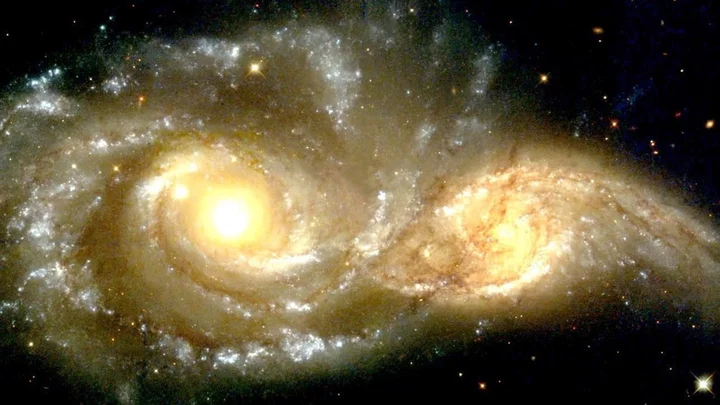
Black holes may lie even closer to us than we thought, new study finds
A new study has revealed that black holes could be lurking much closer to Earth than anticipated. A black hole in space is when "gravity pulls so much that even light can not get out," NASA explains. "The gravity is so strong because matter has been squeezed into a tiny space. This can happen when a star is dying." Due to no light being present, they are invisible. Only special tools can pick up on them. There are said to be around 10 million to 1 billion mass black holes in the Milky Way, according to Science Alert. However, astrologers only know of about 20 of them. Now, a recent study has revealed that they could be a lot closer to Earth than previously thought after investigating the Hyades cluster, "a group of stars located 150 light-years away". In a statement, astrophysicist Stefano Torniamenti of the University of Padua explained: "Our simulations can only simultaneously match the mass and size of the Hyades if some black holes are present at the centre of the cluster today (or until recently). The Hyades with hundreds of stars is said to be approximately 625 million years old. Due to its packed environment, "higher rates of collisions and mergers" are expected. At 153 light-years away, it is considered the closest star cluster to Earth. Researchers were able to observe two or three black holes in the Hyades, which are either still present or ejected less than 150 million years ago and hovering around the outskirts. "This observation helps us understand how the presence of black holes affects the evolution of star clusters and how star clusters in turn contribute to gravitational wave sources," Professor Mark Gieles of the University of Barcelona said. Sign up for our free Indy100 weekly newsletter Have your say in our news democracy. Click the upvote icon at the top of the page to help raise this article through the indy100 rankings.
2023-09-11 20:16
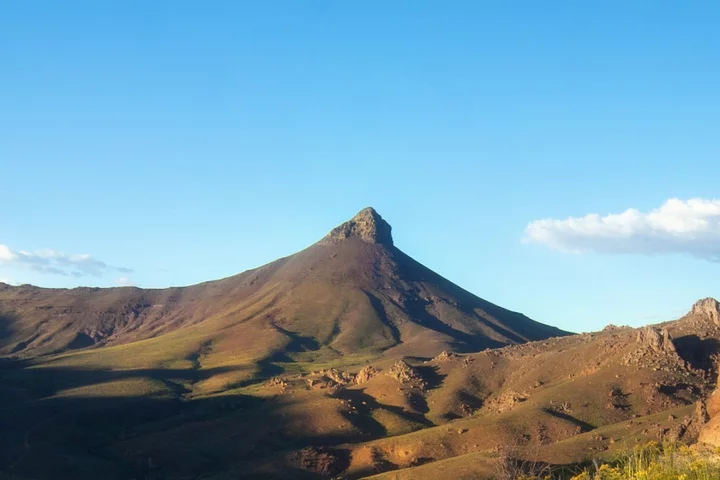
Volcano discovery could power electric cars for decades, scientists say
Scientists say they have discovered the largest lithium deposit in the world inside an extinct volcano in the United States, capable of meeting global battery demand for decades. Volcanologists and geologists reported evidence of the McDermitt caldera on the border of Nevada and Oregon containing up to 120 million tonnes of lithium, holding the potential to disrupt the price and supply dynamics of lithium globally. The ancient supervolcano exploded around 16 million years ago, forming the rare metal inside its volcanic rock. Lithium ion batteries are used to power everything from smartphones to electric vehicles, however the vast amounts of lithium required to produce them has led to a “lithium rush”, according to the researchers. Current supply forecasts suggest roughly 1 million metric tons of lithium will be needed to meet global demand by 2040 – an eight-fold increase from the total global production last year. Calculations from researchers estimate that the McDermitt caldera could contain up to 120 million metric tons of lithium, making it 12-times larger than the amount of lithium in the salt flats in Bolivia, which were previously considered the largest lithium deposit on Earth. “Developing a sustainable and diverse supply chain to meet lower-carbon energy and national security goals requires mining the highest-grade domestic lithium resources with the lowest waste:ore strip ratios to minimise both the volume of material extracted from the Earth,”the researchers noted in a study, published in Science Advances. “Volcano sedimentary lithium resources have the potential to meet this requirement, as they tend to be shallow, high-tonnage deposits with low waste:ore strip ratios.” Mining could begin as early as 2026, according to geologists at Lithium Americas Corporation, who made the discovery alongside GNS Science and Oregon State University. However, the site for a proposed mine on the Nevada side of the caldera has already drawn protests from environmental groups, as well as two area tribes who claim it would be built atop sacred land. Responding to the latest discovery, Tesla boss Elon Musk said the deposit will only be economically significant to the electric car industry if it can be refined in an efficient way. “Lithium ore is quite common throughout the world. The limiting factor is lithium refining,” Mr Musk posted on X, formerly known as Twitter, on Sunday. “Same goes for the cathode, which is primarily iron (medium range cars) or nickel (long range) and the anode, which is carbon. Refining matters more than ore.” Read More Battery breakthroughs are about to trigger a transport revolution Former Alibaba chair Daniel Zhang steps down as head of cloud division How Google reshaped the world – and is about to do it all over again Update your iPhone immediately
2023-09-11 19:53
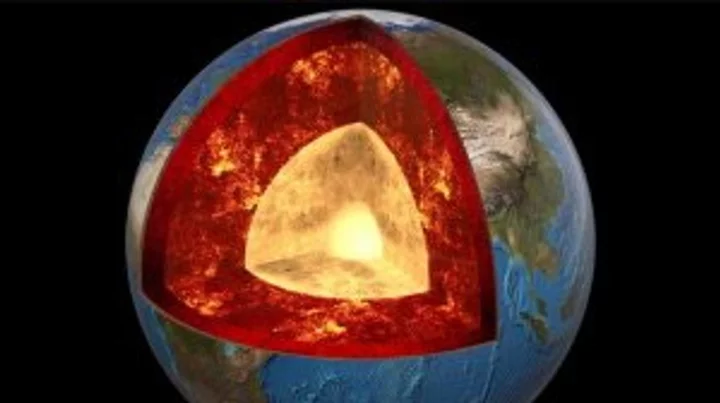
'Mountains' taller than Everest discovered on 'ancient structure' around Earth's core
A new study into the Earth beneath our feet has discovered that an ancient ocean floor structure could be wrapped around the planet's core which could be taller that Mount Everest in some areas. A brand new high-resolution mapping of the core has uncovered things that scientists previously didn't know according to a study that was first published in April. The discovery found that a thin but dense layer sits at around 2,900 kilometers below the surface at the Core Mantle Boundary where rocks meet the molten outer core of the planet. Geologist Samantha Hansen from the University of Alabama is quoted in the study saying: "Seismic investigations, such as ours, provide the highest resolution imaging of the interior structure of our planet, and we are finding that this structure is vastly more complicated than once thought." She adds: "Our research provides important connections between shallow and deep Earth structure and the overall processes driving our planet.” Hansen and her team conducted the research from 15 different stations in Antarctica by using seismic waves created by Earthquakes to create a map of what the inside of the planet looks like. The team identified the unexpected energy within seconds of the boundary-reflected wave from the seismic data. The findings show that although the layer is very thin it does spread for many, many kilometers and has been called the ultra-low velocity zone (ULVZs) due to its strong wave speed reductions. Due to the properties of the ULVZs the experts believe that the layer could vary dramatically in height. Geophysicist Edward Garnero from Arizona State University adds: "The material's thickness varies from a few kilometers to [tens] of kilometers. This suggests we are seeing mountains on the core, in some places up to five times taller than Mt. Everest." These underground mountains could play a significant role in how heat escapes from the Earth's core and power magnetic fields and volcanic eruptions. The team's studies suggest that the layer could encase all of the core but further research will have to be carried out to determine if that is the case. Sign up to our free Indy100 weekly newsletter Have your say in our news democracy. Click the upvote icon at the top of the page to help raise this article through the indy100 rankings.
2023-09-10 19:26
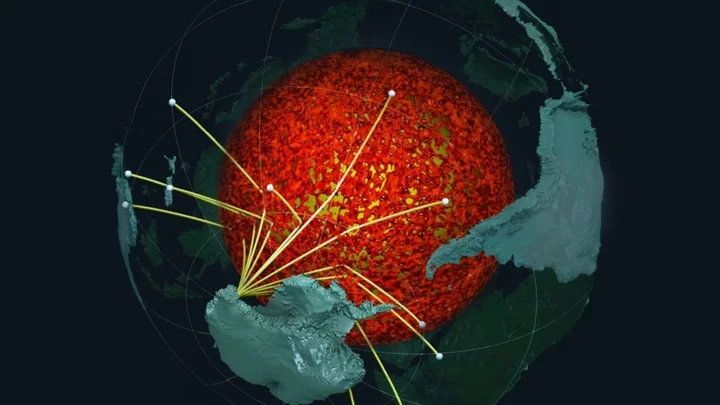
Underground 'mountains' discovered on Earth's core five-times taller than Mt. Everest
A new study into the Earth beneath our feet has discovered that an ancient ocean floor structure could be wrapped around the planet's core which could be taller that Mount Everest in some areas. A brand new high-resolution mapping of the core has uncovered things that scientists previously didn't know according to a study that was first published in April. The discovery found that a thin but dense layer sits at around 2,900 kilometers below the surface at the Core Mantle Boundary where rocks meet the molten outer core of the planet. Geologist Samantha Hansen from the University of Alabama is quoted in the study saying: "Seismic investigations, such as ours, provide the highest resolution imaging of the interior structure of our planet, and we are finding that this structure is vastly more complicated than once thought." She adds: "Our research provides important connections between shallow and deep Earth structure and the overall processes driving our planet.” Hansen and her team conducted the research from 15 different stations in Antarctica by using seismic waves created by Earthquakes to create a map of what the inside of the planet looks like. The team identified the unexpected energy within seconds of the boundary-reflected wave from the seismic data. The findings show that although the layer is very thin it does spread for many, many kilometers and has been called the ultra-low velocity zone (ULVZs) due to its strong wave speed reductions. Due to the properties of the ULVZs the experts believe that the layer could vary dramatically in height. Geophysicist Edward Garnero from Arizona State University adds: "The material's thickness varies from a few kilometers to [tens] of kilometers. This suggests we are seeing mountains on the core, in some places up to five times taller than Mt. Everest." These underground mountains could play a significant role in how heat escapes from the Earth's core and power magnetic fields and volcanic eruptions. The team's studies suggest that the layer could encase all of the core but further research will have to be carried out to determine if that is the case. Sign up to our free Indy100 weekly newsletter Have your say in our news democracy. Click the upvote icon at the top of the page to help raise this article through the indy100 rankings.
2023-09-09 19:54

The Mesh Grating on Your Microwave Is Actually an Important Safety Feature
To block microwave radiation, all you need is a simple screen.
2023-09-08 23:20
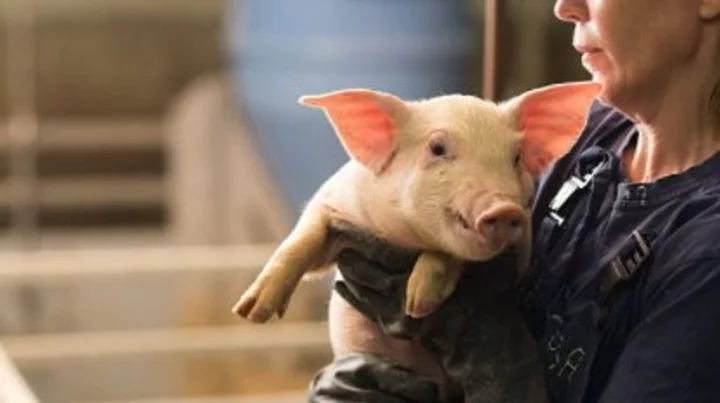
Scientists grow human kidneys inside a pig for the first time
Scientists have grown human kidneys in pigs, for the very first time. Researchers at the Guangzhou Institutes of Biomedicine and Health, Chinese Academy of Sciences and Wuyi University created human-pig chimeric embryos containing a combination of human and pig cells. When they transferred into 13 surrogate pig mothers, they developed kidneys that contained mostly human cells at a rate of 50 to 60 per cent, giving hope for potential transplants in the future. “Rat organs have been produced in mice, and mouse organs have been produced in rats, but previous attempts to grow human organs in pigs have not succeeded,” said the senior author Liangxue Lai. “Our approach improves the integration of human cells into recipient tissues and allows us to grow human organs in pigs.” The kidneys were not entirely human as they included vasculature and nerves made mostly from pig cells, meaning they could not be used for transplantation in their current form, but it is still a pretty impressive step. And apart from the kidneys, the embryos were dominated by pig cells, with very few human cells in the brain or central nervous system. Making brains using human and pig cells is very controversial for ethical reasons, so there are tight regulations for this kind of research. Meanwhile, pig cells tend to outcompete human cells during development, so previous experiments have created embryos that are almost entirely pig. The latest work, published in Cell Stem Cell, overcame this by genetically engineering a single-cell pig embryo so that it lacked two genes needed for kidney development. This created a gap within the embryo that could be filled by human cells. “We found that if you create a niche in the pig embryo, then the human cells naturally go into these spaces,” said Prof Zhen Dai of Guangzhou Institutes of Biomedicine and Health, another senior author. The scientists said that being able to incubate a fully human kidney inside a pig would be likely to take many years. “We would probably need to engineer the pigs in a much more complex way and that also brings some additional challenges,” said Miguel Esteban, also of the Guangzhou institute and a senior author. A central challenge would be to allow human nerves and vasculature to develop within the target organ without nerve cells developing in the central nervous system that could lead to a humanised brain. “Even theoretically it’s not clear how you’d do that,” said Ilic. Sign up to our free Indy100 weekly newsletter Have your say in our news democracy. Click the upvote icon at the top of the page to help raise this article through the indy100 rankings.
2023-09-08 19:49

Human embryo created without using sperm or eggs
Scientists in Israel have created a model of a human embryo from stem cells, without using sperm, eggs or a womb. A team at Israel's Weizmann Institute of Science made the model, which resembles an embryo at day 14, when it acquires internal structures but before it lays down the foundations for body organs, and the work was published in the journal Nature. But the scientists involved said it would take a long time yet to create an embryo from scratch. Team leader Jacob Hanna said the team took stem cells derived from adult human skin cells, as well as others cultured in the lab, then reverted the cells to an early state.They then manipulated them to make a model of an embryo, rather than an actual or synthetic one. "The question is, when does an embryo model become considered an embryo? When that happens, we know the regulations. At the moment we are really, really far off from that point," Hanna said. However, they said the work could open the door to new ways to test the effect of drugs on pregnancies, better understand miscarriages and genetic diseases, and maybe grow transplant tissues and organs. "They are not identical. There are differences from human embryos, but still, this is the first time, if you open an atlas or a textbook, you can say - yeah I can really see the similarity between them," said Hanna. "In about 1 percent of the aggregates we can see that the cells start differentiating correctly, migrating and sorting themselves into the correct structure, and the farthest we could get is day 14 in human embryo development," he said. Their next goal, Hanna said, is to advance to day 21 and also reach a threshold of a 50 per cent success rate. Magdalena Żernicka-Goetz, a professor of development and stem cells at the University of Cambridge, said the study joins six other similar human embryo-like models published from teams around the world this year, including from her lab. "None of these models fully recapitulate natural human development but each adds to ways in which many aspects of human development can now be studied experimentally," she said. Sign up to our free Indy100 weekly newsletter Have your say in our news democracy. Click the upvote icon at the top of the page to help raise this article through the indy100 rankings.
2023-09-08 18:26

Robotic dog brought into survey historic Cold War weapons testing facilities
A robotic dog called Spot was brought into survey two former Cold War weapons testing facilities, which are unsafe for humans to enter due to decaying concrete. The National Trust said bringing the tech to Orford Ness in Suffolk to conduct a first measured survey of the historic structures was “a key part of our commitment to ongoing research at our places”. The remote shingle spit was used as a military test site during both world wars and into the nuclear age, before the Ministry of Defence sold it to the conservation charity in 1993. The robotic dog, with a camera mounted to the top and four hinged legs, is controlled remotely and from a safe distance to explore spaces where it is unsafe for humans to go. It was used, alongside drones, to survey two laboratories known as pagodas or Labs 4 and 5 at Orford Ness. Both are classified as scheduled monuments. They were constructed in 1960 to carry out environmental tests on the atomic bomb, mimicking the rigours to which a weapon might be subjected before detonation, including vibration, extremes of temperature, shocks and G forces. Although no nuclear material was involved, a test failure could still have resulted in a catastrophic explosion. For this reason, the labs were specially designed and constructed with a shingle top which would absorb and dissipate if an explosion occurred. Glen Pearce, operations manager at the National Trust’s Orford Ness, said: “This is a really exciting opportunity for us to see inside labs four and five, the ‘pagodas’. “The buildings have always had a certain mystery about them. “When they were built and in use during the Cold War, they were shrouded in secrecy, and after they were decommissioned, they fell into disrepair. “Nobody has been able to go inside for several years due to safety reasons. “This is the first time the National Trust has employed this kind of technology and it’s a key part of our commitment to ongoing research at our places. “It could change the way we, and our visitors, engage with the structures at Orford Ness as well as other scheduled monuments and buildings deemed unsafe to enter.” No measured surveys have been completed of the buildings before, the conservation charity said. National Trust archaeologist Angus Wainwright said: “Historic England’s research into the buildings made us realise how significant they are, on a national and international scale. “These are some of the few Cold War buildings that are on this monumental scale and visitable by the public. “The buildings used to be quite safe so we could go in and out as much as we liked, but now they are getting more risky as the concrete decays. “That’s why we are doing this survey in this remote way, without anyone going into the buildings. “It’s all very experimental, to see if it’s possible to do a really detailed building survey with no human operator in the building.” The structures are part of the National Trust’s curated decay policy and have been left to nature, with their roofs becoming nesting sites for lesser black-backed gulls, which are on the UK’s amber conservation list. Colin Evison, innovation technical lead at BAM, said it was a “fantastic opportunity to put into action our agile mobile robot Spot”. He said the survey would provide a “comprehensive and valuable record of this historic environment for future generations”. Read More Charity boss speaks out over ‘traumatic’ encounter with royal aide Ukraine war’s heaviest fight rages in east - follow live Period and fertility tracking apps scrutinised over data security concerns Russian cyber-attacks ‘relentless’ as threat of WW3 grows, expert warns Warner Music sign first digital character Noonoouri and release debut single
2023-09-08 15:21
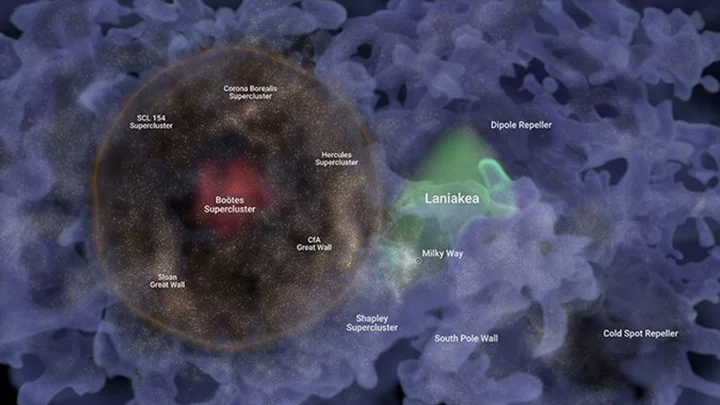
Massive bubble of galaxies could be ‘fossil of the Big Bang’, say scientists
A huge bubble of galaxies that is one billion lightyears across could be a remnant of the ripples caused by the Big Bang, according to astronomers who have mapped the structure. The structure, named Hoʻoleilana by University of Hawaii scientists, is thought to have been caused by so-called Baryon Acoustic Oscillations (BAOs). These were ripples in the particles of the early Universe in the period following the Big Bang, when planets, solar systems and galaxies were not yet fully formed. As the ripples went outward, they created areas of density in the particles, causing bubble-like structures in which galaxies eventually coalesced. Until now, the BAOs were just a prediction – part of the wider Big Bang theory. No specific structures in the Universe had been found which mimicked their patterns. But Hoʻoleilana fits the description of these huge cosmic bubbles perfectly, according to Brent Tully, who led the study at the University of Hawaii’s Institute for Astronomy. “We were not looking for it. It is so huge that it spills to the edges of the sector of the sky that we were analyzing,” he said. “As an enhancement in the density of galaxies it is a much stronger feature than expected. The very large diameter of 1bn light years is beyond theoretical expectations. “If its formation and evolution are in accordance with theory, this BAO is closer than anticipated, implying a high value for the expansion rate of the universe.” The bubble is absolutely huge. It is made up of several superclusters, structures which themselves are thought to be among the Universe’s largest arrangements of matter. This includes the Hercules Supercluster, the Corona Borealis Supercluster and the Sloan Great Wall. All of these structures contain thousands of galaxies. In the middle of Hoʻoleilana sits the Bootes Supercluster and the Bootes Void, an immense space of nothingness which is an incredible 330m lightyears across. Daniel Pomarede, from the CEA Paris-Saclay University, who contributed to the research, said: “It was an amazing process to construct this map and see how the giant shell structure of Ho’oleilana is composed of elements that were identified in the past as being themselves some of the largest structures of the universe.” The research was published on 5 September in The Astrophysical Journal. Sign up to our free Indy100 weekly newsletter Have your say in our news democracy. Click the upvote icon at the top of the page to help raise this article through the indy100 rankings.
2023-09-07 20:00
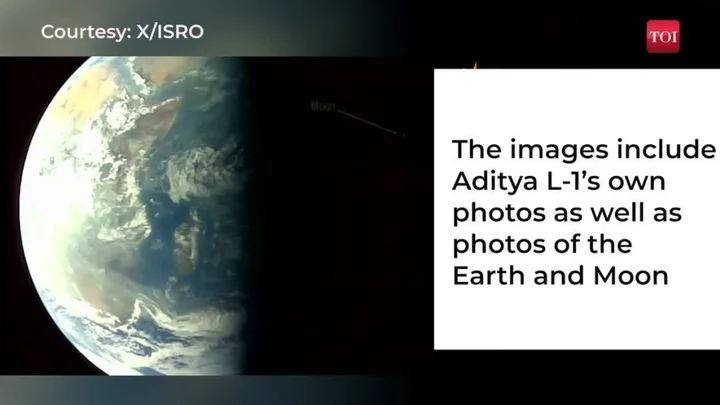
India’s Moon lander just detected movement below the lunar surface
India’s Vikram lunar lander has recorded movement below the surface of the Moon – but it’s probably not aliens. Experts think the movement is seismic activity – the lunar equivalent of earthquakes. It is the first time humans have detected the so-called moonquakes since the 1970s. The new activity was recorded by the Vikram lander’s onboard instrument for lunar seismic activity, a piece of kit designed “to measure ground vibrations generated by natural quakes, impacts, and artificial events,” the Indian Space Research Organization (ISRO) said. India’s Chandrayaan-3 mission saw it land the Vikram and its sister craft, the Pragyan rover, last month, becoming the first nation to land near the Moon’s little-explored South Pole. It also makes India just the fourth nation to land on the Moon, alongside the US, the former USSR and China. The seismic activity is the first recorded since the US Apollo programme, which ended in 1977. Those recordings yielded valuable data about the Moon’s makeup. Scientists have been able to theorise that the Moon has an inner core which is much less dense than the Earth’s and which is about 500km across. On Earth, seismic activity is caused by the shifting of the planet’s tectonic plates. But on the Moon, things are a bit different. The quake could be caused by thermal activity from the Sun, or by tidal stresses caused by Earth’s gravity, cracking the planet and causing the pieces to rub together. The team noted that the event is currently under investigation. Sign up to our free Indy100 weekly newsletter Have your say in our news democracy. Click the upvote icon at the top of the page to help raise this article through the indy100 rankings.
2023-09-07 19:20

Generation AI: education reluctantly embraces the bots
By Barbara Lewis and Supantha Mukherjee LONDON/STOCKHOLM At leading Swedish university Lund, teachers decide which students can use
2023-09-07 16:50
